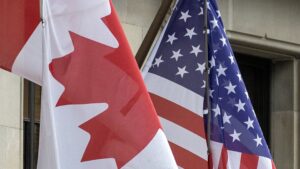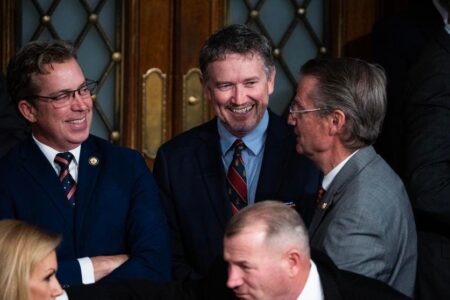The faculty and staff at Pennsylvania’s Newmann University knew that resources had been tight–there were indications around the campus, and they had not gotten a raise in several years. In fact, in the fall of 2023, the school was running a deficit of $12M on a budget of $83M. But the administration had not been forthcoming about the University’s true financial picture. The new CFO, Bruce Cairnduff had been on the job less than six months when, at the first faculty senate meeting that fall, he presented the unvarnished truth about their situation.
This is the story of a university that managed a significant turnaround quickly by involving all faculty and staff in the process. At that fall 2023 meeting, the faculty took this message very seriously–Cabrini College, less than 30 minutes away, had announced it was going to close the following year, and they did not want the same thing to happen to Neumann. Cairnduff assured the faculty that the situation could be turned around and that he had a three-year plan to move the University to a balanced budget, but it would mean doing business differently and would require everyone on the campus to collaborate. He and the president, Chris Domes, made it clear that the student experience would not be harmed and that the impact on faculty and staff would be minimized. President Domes said to the faculty, “you need to help us make sure we are spending our money wisely; we don’t want to impact people, and we don’t want to impact the student experience.” According to Geoffrey Karabin, Professor of Philosophy, “the faculty came out of the meeting in shock but with a sense of hope because they were told there is a plan.”
Beginning with that Fall 2023 meeting, the University reduced its deficit from $12M in FY 2023 to $1.9 M in FY 2024. Neumann’s deficit will be less than $1M this year and in FY 2026 the University expects to have a balanced budget if not a surplus.
How did they accomplish this turnaround so quickly and how did they get people to collaborate? The president, provost and CFO were all on the same page and made it clear that everyone was in this together and that they all had to help, whether it was working on student retention, making their curriculum more relevant, or cooperating when changes were made to operations. They were very open about all the University’s finances; Cairnduff continually shares all the numbers, everyone has access to their budgets. He has an open-door policy and is willing to talk to anyone and to answer all questions that he is asked. The CFO and the president are very accessible; for example, they eat in the dining hall whenever they are on campus.
Today, Neumann has the same number of faculty and staff as they had in 2023 but there has been a reallocation of those resources. For example, one of the four schools was eliminated and there are two fewer vice presidents and one fewer dean. Their enrollment has remained fairly steady at around 2200 students with a shift in favor of graduate enrollment.
The solution involved three primary strategies:
- Reductions in operating costs and increases in productivity
- Changes to academic programs and mergers of schools
- Increases in student revenue and development of new sources of revenue
In the short run, most of the savings came from reductions in operating costs and increases in productivity. Over the long term, changes in academic programs and increases in revenue will have longer term impacts and will be necessary to maintain financial health.
Reductions in operating costs and increases in productivity
The new CFO took over control of all expenditures and looked at everything and continually asked “why are we doing this; do we need this?” There was no magic bullet but many small changes that when added together resulted in large savings. He implemented a purchase order system and removed almost all credit cards and University cell phones. He reviewed all the University’s contracts; rebid many of them and chose to insource some where services had been outsourced. This often required increased work for the staff in certain areas and he increased their salaries to compensate for the additional work. He changed the hours of the dining hall and made everyone aware of their need to question all their expenditures. For example, most meetings no longer served food and there were lots of other small expenditures that were eliminated. The campus shuttle which covered a small distance was eliminated, and the University’s retirement contribution was reduced from 6% to 5%. Cairnduff shared his thoughts with the campus and continually took feedback; he would admit when he made a bad decision and would fix it. He established great trust with the campus in a very short period. The University developed a culture where everyone evaluated all their expenditures and was clear on the trade-offs that could be made because they now had the numbers. For example, faculty and staff were now aware of the savings that could be had from using live music vs. recorded music in a production or at a student activity and could make this trade-off to stay within their budget and to accomplish what they felt was most important.
Changes to academic programs and mergers of colleges
Neumann moved from four schools to three and reshuffled the departments that were in the eliminated School of Arts and Sciences. The addition of the programs from the closed school to the three remaining schools led to more collaboration among the faculty and some redesign of the programs from the School of Arts and Sciences to increase their market relevance. For example, the arts programs were moved to the Business School and degrees in Innovation in Arts Management, Innovation in Theatre Management and Innovation in Music Management were created. According to Eric Wellington, Dean of the Business School and Provost Designate, it was “paint with a twist” where all these students were given business courses related to their major.
The faculty realized that they had to start doing business differently and had to revise existing programs to be market relevant and get new programs to market quickly. A few programs with low demand are being phased out; four new graduate programs, three new undergraduate programs, a new minor and a certificate have been added in the last 18 months and more new programs and partnerships are planned for fall 2026. The new programs often can be taught with existing faculty and where new faculty have been needed; they have come from reallocating vacant faculty positions. According to Wellington, the challenge was to “build programs where there is student demand. They did have some good turnover and have put faculty lines where they can best use them.”
Increases in student revenue and development of new sources of revenue
In terms of revenue enhancements, faculty were asked to partner more fully to help with student retention and recruitment. All faculty were asked to “adopt” 25 – 30 students and get to know them well so they would know if the student was having a problem. They didn’t need to solve the problem they just needed to inform the appropriate office on campus that could help to reach out to the student. Faculty have become more involved in recruitment activities as they now clearly understand the relationship between additional tuition revenue and financial health. Cairnduff personally will work with students to help them get the resources needed to stay in school. He has increased summer and rental income revenue; for example, graduation was moved from Saturday to Sunday as the campus can rent the graduation space on Saturday and he brought a coffee shop to the campus so, as he said, “the University gets the coffee money rather than the shop around the corner.”
Hundreds of small changes have made the difference and, surprisingly, because almost everyone has been a partner in this and knows all the numbers, there has been little pushback. In addition, the senior team has kept their eyes on enrollment and the tuition discount rate to make sure that they are getting the appropriate net revenue from their students. Understanding how everyone has helped, the University gave raises last year for the first time in several years and plans to give raises again this July. Even though the raises are relatively modest, the gesture clearly indicates that faculty and staff are appreciated and that they are a priority. According to Rina Kellar, professor of business, “In hindsight, they were spending extravagantly.”
Neumann isn’t Utopia; not everyone is thrilled with all the changes but there is a general understanding of the need for the new way of doing business at the University if it is to thrive and stay financially healthy while serving students well.
With more institutions operating with unsustainable deficits, the specter of closings remains high. Newmann’s experience demonstrates that, when the entire community becomes part of the solution and a sense of trust exists, significant change is possible quickly.
Read the full article here
















